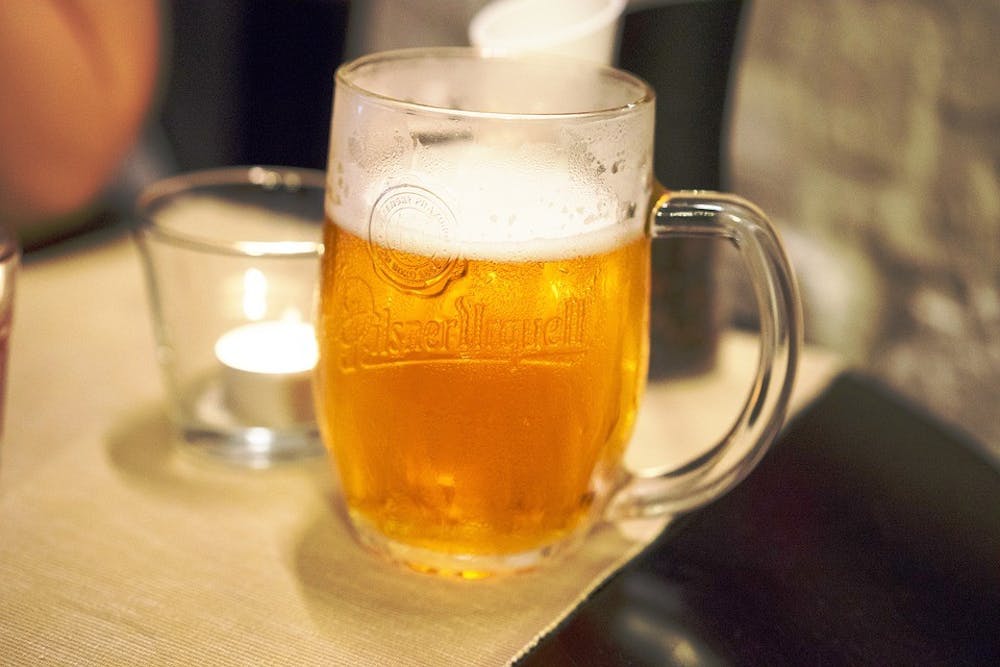There’s nothing quite like taking that first sip of a warm, fratty Natty on a Friday night. If you think you’ve tasted bad beer, chances are it’s nothing near the bitter, debris–loaded beverage first concocted by our Sumerian ancestors over six thousand years ago.
Luckily for you, you don’t have to drink either, especially not while you’re in Philadelphia, where the ever–expanding brewery scene continues to win the city clout among beer aficionados nationwide. In the past few years alone, dozens of new beer gardens and craft beer bars have popped up across the city. Just this month, 12 Philadelphia area breweries snagged medals at the 2017 Great American Beer Fest.
If you’re newer to drinking (you know, because it’s illegal for most of you), it can be easy to get lost trying to tell your saisons from your sours and your pilsners from your porters. Here’s some of what you’ll need to know to imbibe with the best of them.
What’s actually in this stuff?
The most basic of beers will start with a hefty bunch of dried–out barley. This grain, put through a heating and cracking process known as malting, forms the heart of most beers. Other grains, like wheat and rye, are now often used in addition to or in lieu of barley, but it’s always the grain that gives a beer its hefty, bready flavor. Malted grains are boiled in water to release their sugars, creating a thick liquid known as wort.
The third ingredient, hops, is a relative newcomer to the brewing process, having only been introduced sometime around the start of the ninth century. These small, fruit–like buds are actually a distant cousin of another popular green bud, but their purpose in beer is to act as a bittering agent. The stronger that distinct, bitter flavor is in a finished beer, the more hops were used to brew it.
When wort is fully formed and hops and other spices or flavorings have been added, the mixture is strained into a large jug to ferment. Just before the container is airlocked and left to sit for up to two weeks, yeast and sugar are added, kicking off the process of fermentation that leads to the production of alcohol inside the jug. After that, it’s a long waiting game, then moving beer into sealed bottles, and waiting some more.
So what makes beers different, and how do you decide what you want to order?
Of the hundreds and hundreds of varieties out there, most beers fall into two categories: ales and lagers.
Ale is the OG beer. The oldest recipe for beer ever discovered, unearthed by archeologists in the early '90s, was for a standard Mesopotamian ale. Of what we drink today, classic Belgian beers, traditional Irish stouts, and many other European oldies all fall into the ale family.
Ales ferment at warm temperatures, and the quick–acting yeast sits at the top during the process. Bottom–dwelling lager yeast strains, by contrast, operate very slowly and at much cooler temperatures. As a result, the average ale will have a slightly more bitter, hoppier taste than a standard lager, which will come out lighter and crisper.
The word lager itself comes from a German word for a warehouse or cellar. If you’re looking to whip out some beer snob slang at your next trip to Local 44, just ask your waitress how long the beer you ordered was lagered for. This German tie–in is, however, a great way to decipher what family a beer belongs to—aside from wheat beers, which you can usually spot by looking for “weizen,” “wit,” or “weisse” in their names, most beers with German or Czech–sounding titles are safe bets to be be lagers. Pilsners, Bocks, and Helles–style beers are among the most common varieties of European lagers.
Oh, and our campus favorites, like “Natural” Light, Keystone Light, and Pabst Blue Ribbon? Those are American lagers. You shouldn’t drink those.
Okay, so how do I order a beer?
Figuring out which type of beer you like can be a daunting task. Here are a few examples of what you might find on tap:
Blonde Ale & Golden Ale: A very English style of beer. They’re usually a light gold or copper color, with a dryer, crisper, yet subdued flavor. Expect fruitiness.
Looking locally? Try Flying Fish Brewing Company’s Farmhouse Summer Ale
IPA: Short for India Pale Ale. A normal pale ale, but much more bitter and citrus-y, with a higher alcohol content. If it’s got “hop” in the name, it’s not for the faint of heart.
Looking locally? Try Tröegs’ Perpetual IPA
Amber Ale & Brown Ale: Darker (duh) and heartier than a pale ale. At their lightest, brown and amber ales are caramel–colored and full–tasting, with a solid malt flavor that gets stronger along the spectrum.
Looking locally? Try Conshohocken Brewing Company’s CDA (Cascadian Dark Ale)
Stout & Porter: If pale ales are summer, and amber ales are fall, stouts and porters are the dead of winter. These are the thick beers that will make you feel full for hours, with little trace of bitter hops. Stouts and porters often border on sweet, and are frequently enhanced with flavors like coffee and chocolate.
Looking locally? Try Yards Brewing Co.’s Love Stout
Pilsner: Pilsners are brewed with more hops than most lagers, making them the best of both worlds and one of the most popular styles of beer worldwide. A bit floral, a bit spicy, and a bit malty, a good pilsner is as unique as it is refreshing.
Looking locally? Try Victory Brewing Company’s Braumeister Pils
Wheat Beer: These taste the most like bread. Yum.
Looking Locally? Try Nodding Head Brewery’s Ich Bin Ein Berliner Weisse







